| View previous topic :: View next topic |
| Author |
Message |
KarelDH

Joined: 24 Mar 2011
Posts: 169
Location: Belgium
|
 Posted: Thu May 10, 2012 5:45 pm Post subject: kodak 917mm f=8 usable ? Posted: Thu May 10, 2012 5:45 pm Post subject: kodak 917mm f=8 usable ? |
 |
|
KarelDH wrote:
hi,
I can buy this lens for around 110 euro, but i was wondering if i would be possible to use ?
Does anyone have any more info about this lens ?
eastman kodak 805700 36inch (917mm) f/8 9x18 re985
(it has aperture blades)
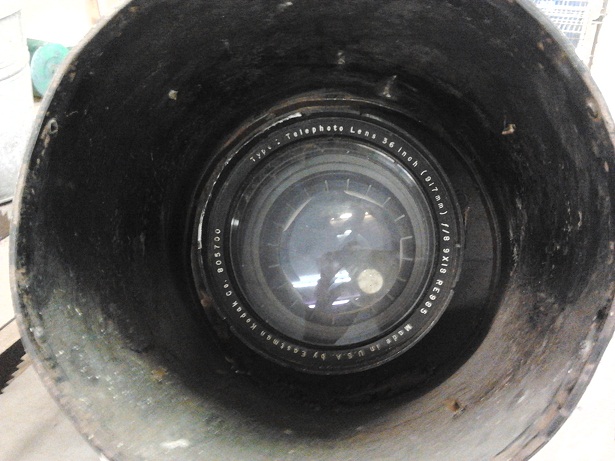
(looks a lot like this http://www.benl.ebay.be/itm/VINTAGE-LARGE-36-917mm-f-8-TELEPHOTO-LENS-TYPE-1-BELL-HOWELL-by-FAIRCHILD-C-/380431797930?pt=Camera_Lenses&hash=item5893808eaa).
Thanks. |
|
| Back to top |
|
 |
Ultrapix

Joined: 06 Jan 2012
Posts: 570
Location: Italy
|
 Posted: Thu May 10, 2012 6:19 pm Post subject: Posted: Thu May 10, 2012 6:19 pm Post subject: |
 |
|
Ultrapix wrote:
Looks hazy... I also guess that its weight would be a challenge for any bellow 
BTW, I would give it a chance if intended for large format. |
|
| Back to top |
|
 |
iangreenhalgh1


Joined: 18 Mar 2011
Posts: 15679
Expire: 2014-01-07
|
 Posted: Thu May 10, 2012 7:44 pm Post subject: Posted: Thu May 10, 2012 7:44 pm Post subject: |
 |
|
iangreenhalgh1 wrote:
You could use it, I remounted a Wollensak APO-Raptar 21.25 inch (541mm) but bear in mind, a 917mm lens will need a tube over 800mm long plus bellows on the back for focusing, you would need a serious tripod and a camera with IS I think.
This is my Raptar:
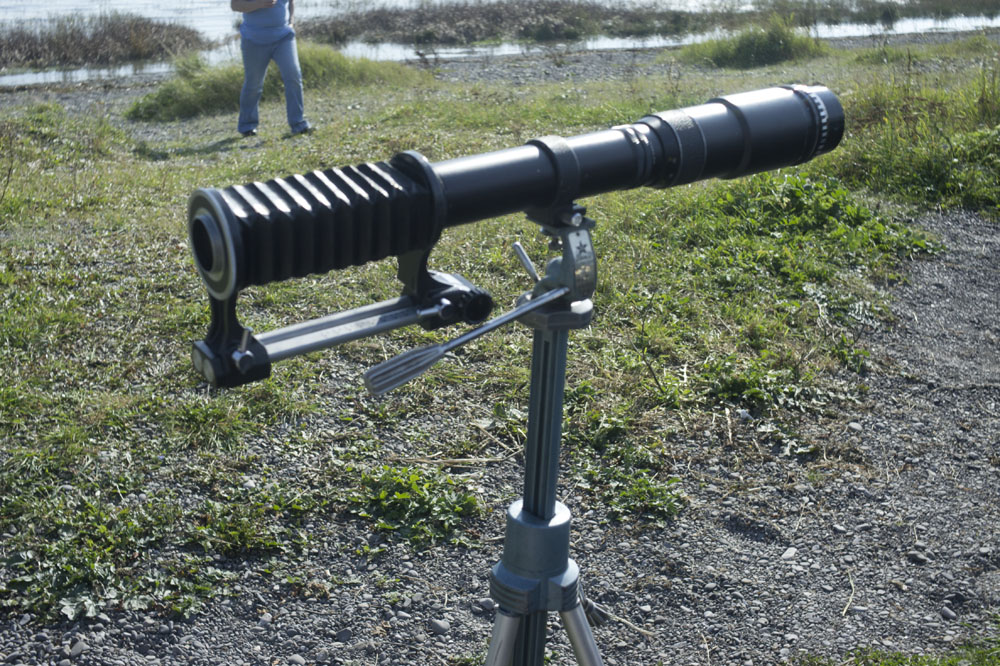
It works and is a very sharp lens but needs bright light and a fast shutter speed as my NEX-3 doesn't have IS:
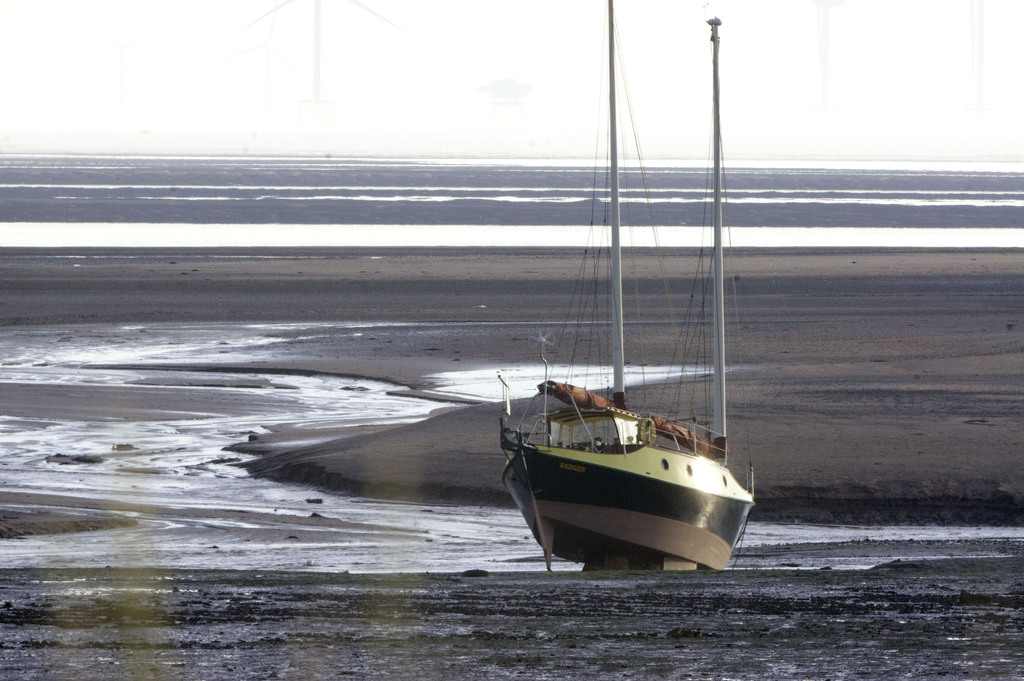
100% crop:
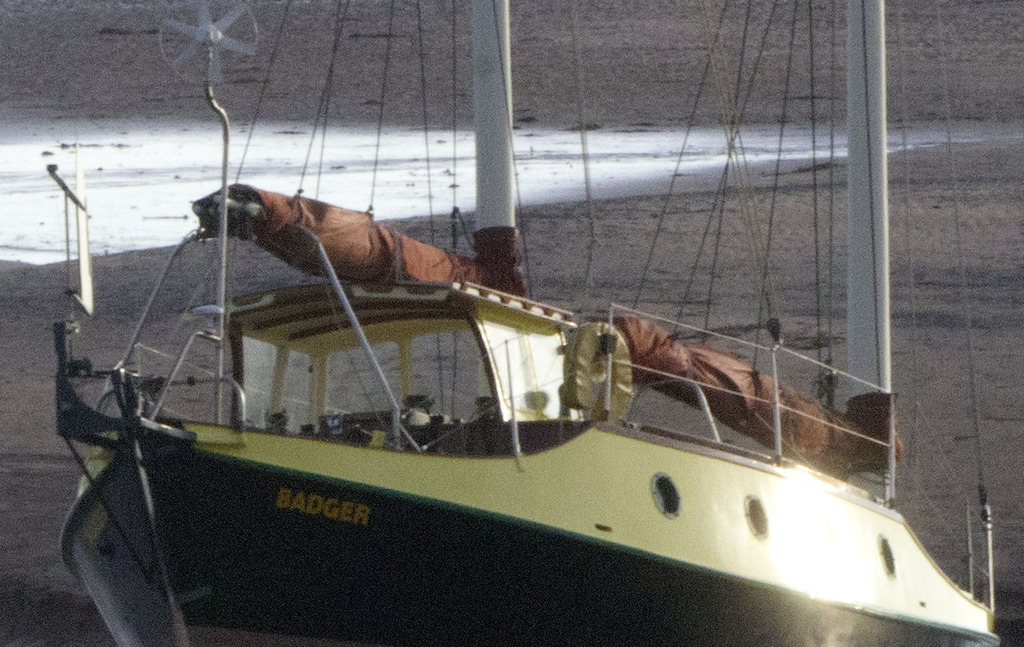
_________________
I don't care who designed it, who made it or what country it comes from - I just enjoy using it! |
|
| Back to top |
|
 |
Minolfan


Joined: 30 Dec 2008
Posts: 3439
Location: Netherlands
|
 Posted: Thu May 10, 2012 11:12 pm Post subject: Posted: Thu May 10, 2012 11:12 pm Post subject: |
 |
|
Minolfan wrote:
Nice ne with the Wollensak!
But I think that two tripods are needed to get a bit stabel assembly. |
|
| Back to top |
|
 |
luisalegria


Joined: 07 Mar 2008
Posts: 6602
Location: San Francisco, USA
Expire: 2018-01-18
|
 Posted: Fri May 11, 2012 12:49 am Post subject: Posted: Fri May 11, 2012 12:49 am Post subject: |
 |
|
luisalegria wrote:
This is a telephoto, so maybe the mounting need not be quite as long as Ian's.
If you want to go to the trouble, it may be viable as a portrait lens for a very large format camera.
On an 8x10 view camera it would be about the equivalent of a 135mm on a 35mm camera. Because its telephoto you probably won't need as much extension as it appears, though you probably will need well over 36" overall at portrait distances, and I doubt most stock 8x10 view cameras have the extension. Some extra arrangement would have to be made, such as a "top hat" lens board.
On an 11x14 view camera it would be a short tele (portrait!), and I expect this lens would cover that format as its marked to cover 9x18. An 11x14 view camera may have the extension to use this.
_________________
I like Pentax DSLR's, Exaktas, M42 bodies of all kinds, strange and cheap Japanese lenses, and am dabbling in medium format/Speed Graphic work. |
|
| Back to top |
|
 |
iangreenhalgh1


Joined: 18 Mar 2011
Posts: 15679
Expire: 2014-01-07
|
 Posted: Fri May 11, 2012 1:47 am Post subject: Posted: Fri May 11, 2012 1:47 am Post subject: |
 |
|
iangreenhalgh1 wrote:
Interesting, I didn't realise it was a telephoto, cheers Luis, I just assumed that it would need to be 917mm from the film/sensor plane to give infinity.
_________________
I don't care who designed it, who made it or what country it comes from - I just enjoy using it! |
|
| Back to top |
|
 |
KarelDH

Joined: 24 Mar 2011
Posts: 169
Location: Belgium
|
 Posted: Tue Mar 19, 2013 7:50 pm Post subject: Posted: Tue Mar 19, 2013 7:50 pm Post subject: |
 |
|
KarelDH wrote:
finally removed the internal optics of the telescope. hole in the rear an added focusing bellow, took a Photo of the moon with this lens.
pretty decent, might create a good support system and clean this beast to a beauty.
 |
|
| Back to top |
|
 |
Attila


Joined: 24 Feb 2007
Posts: 57865
Location: Hungary
Expire: 2025-11-18
|
 Posted: Tue Mar 19, 2013 7:52 pm Post subject: Posted: Tue Mar 19, 2013 7:52 pm Post subject: |
 |
|
Attila wrote:
Well done, result is lot better what I ever expected in advance! Congrats!
_________________
-------------------------------
Items on sale on Ebay
Sony NEX-7 Carl Zeiss Planar 85mm f1.4, Minolta MD 35mm f1.8, Konica 135mm f2.5, Minolta MD 50mm f1.2, Minolta MD 250mm f5.6, Carl Zeiss Sonnar 180mm f2.8
|
|
| Back to top |
|
 |
s58y


Joined: 05 Sep 2010
Posts: 131
Location: Eastern NY
Expire: 2013-09-10
|
 Posted: Tue Mar 19, 2013 8:38 pm Post subject: Posted: Tue Mar 19, 2013 8:38 pm Post subject: |
 |
|
s58y wrote:
Excellent details on the moon.
Of course, the real acid test for a lens of this size would be Jupiter 
_________________
flickr photostream
|
|
| Back to top |
|
 |
Lloydy


Joined: 02 Sep 2009
Posts: 7794
Location: Ironbridge. UK.
Expire: 2022-01-01
|
 Posted: Tue Mar 19, 2013 11:30 pm Post subject: Posted: Tue Mar 19, 2013 11:30 pm Post subject: |
 |
|
Lloydy wrote:
Wow! that is good. It's worth a bit more effort I guess.
_________________
LENSES & CAMERAS FOR SALE.....
I have loads of stuff that I have to get rid of, if you see me commenting about something I have got and you want one, ask me.
My Flickr https://www.flickr.com/photos/mudplugga/
My ipernity -
http://www.ipernity.com/home/294337 |
|
| Back to top |
|
 |
KarelDH

Joined: 24 Mar 2011
Posts: 169
Location: Belgium
|
 Posted: Wed Mar 20, 2013 9:57 am Post subject: Posted: Wed Mar 20, 2013 9:57 am Post subject: |
 |
|
KarelDH wrote:
| Quote: |
s58y
Posted: Tue Mar 19, 2013 8:38 pm Post subject:
Excellent details on the moon.
Of course, the real acid test for a lens of this size would be Jupiter |
Ok i will try taking a picture of Jupiter. But because i know squat off astronomy, How do i find it ?  |
|
| Back to top |
|
 |
s58y


Joined: 05 Sep 2010
Posts: 131
Location: Eastern NY
Expire: 2013-09-10
|
 Posted: Wed Mar 20, 2013 11:52 am Post subject: Posted: Wed Mar 20, 2013 11:52 am Post subject: |
 |
|
s58y wrote:
| KarelDH wrote: |
...
Ok i will try taking a picture of Jupiter. But because i know squat off astronomy, How do i find it ?  |
In the evening, after dark, it's the brightest thing up there (except the moon). I think it's over towards the west in March.
The best exposure setting for Jupiter will be somewhat longer than for the moon, since the surface is dimmer -- it's farther from the sun.
_________________
flickr photostream
|
|
| Back to top |
|
 |
KarelDH

Joined: 24 Mar 2011
Posts: 169
Location: Belgium
|
 Posted: Sat Apr 13, 2013 8:24 am Post subject: Posted: Sat Apr 13, 2013 8:24 am Post subject: |
 |
|
KarelDH wrote:
hi,
The beast out of his shell.
There is a shutter mechanism inside but i cant get it to work.
any idea's ?


 |
|
| Back to top |
|
 |
luisalegria


Joined: 07 Mar 2008
Posts: 6602
Location: San Francisco, USA
Expire: 2018-01-18
|
 Posted: Sat Apr 13, 2013 8:44 am Post subject: Posted: Sat Apr 13, 2013 8:44 am Post subject: |
 |
|
luisalegria wrote:
I expect the shutter would have been electrically driven in synchronization with the motor drive for film advance.
This does look like it was made for a large aerial camera.
The operating rods there look like they would have been the way the shutter and aperture were driven.
Best probably would be to remove the lens cells and try clean up the aperture mechanism.
You probably won't get the shutter working just by soaking in Naptha. Be careful as there may be rubber components inside for insulation and sealing, naptha may just make a mess.
_________________
I like Pentax DSLR's, Exaktas, M42 bodies of all kinds, strange and cheap Japanese lenses, and am dabbling in medium format/Speed Graphic work. |
|
| Back to top |
|
 |
iangreenhalgh1


Joined: 18 Mar 2011
Posts: 15679
Expire: 2014-01-07
|
 Posted: Sat Apr 13, 2013 12:58 pm Post subject: Posted: Sat Apr 13, 2013 12:58 pm Post subject: |
 |
|
iangreenhalgh1 wrote:
That is a very good moon shot. What a huge lens, reminds me of the Wray 36 inches for the RAF.
_________________
I don't care who designed it, who made it or what country it comes from - I just enjoy using it! |
|
| Back to top |
|
 |
ForenSeil


Joined: 15 Apr 2011
Posts: 2726
Location: Kiel, Germany.
|
 Posted: Sat Apr 13, 2013 2:13 pm Post subject: Posted: Sat Apr 13, 2013 2:13 pm Post subject: |
 |
|
ForenSeil wrote:
Lens is a little bigger than I expected. Nice piece 
A Baader Contrast Booster or Baader Fringe Killer (both 20-40€ used) or similar would improve the IQ dramatically for asto work I guess.
(Contrast Booster is more effective but has in cause of that also more impact on colors)
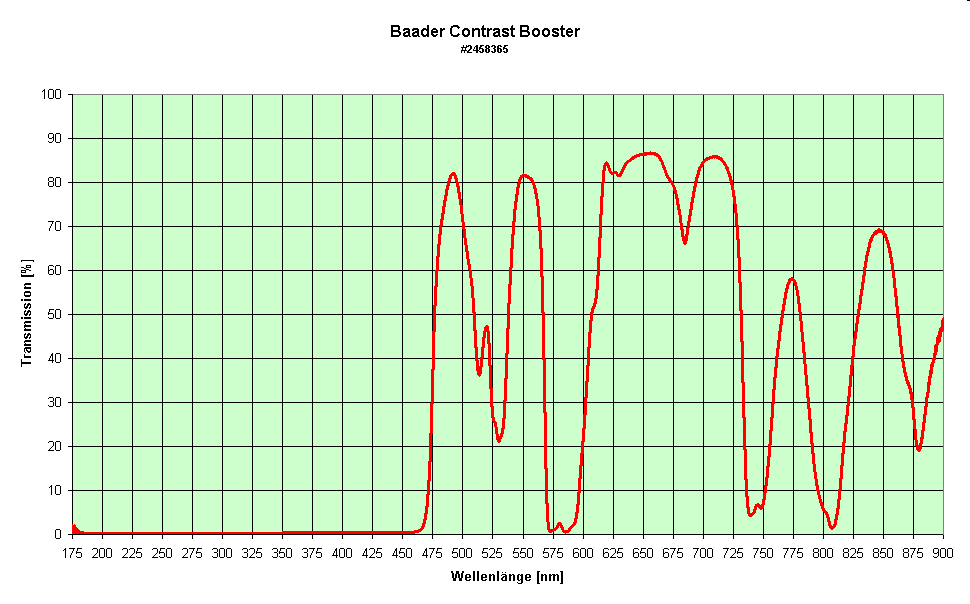
Source: http://www.astroamateur.de/filter/multiband.html
As you can see it would supress the blueish/purple transmission (~380-450nm) and so remove the CAs
An sample using the filter on an F6.6 Petzval
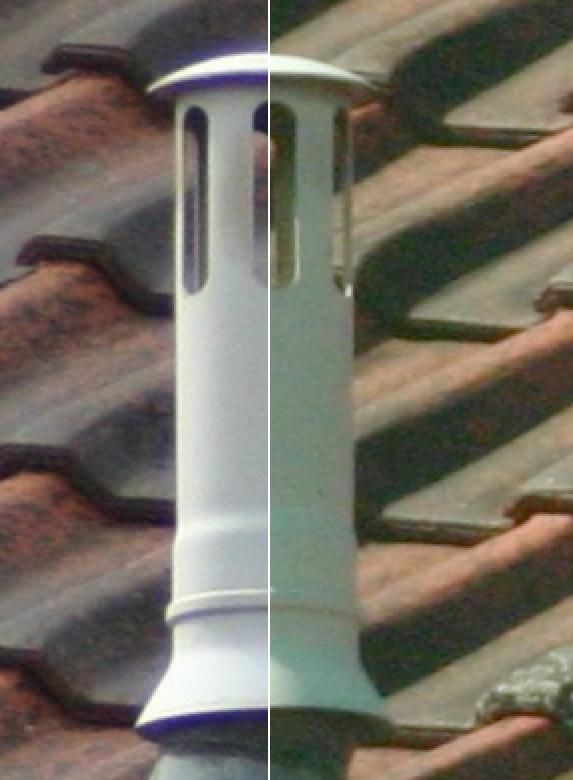
Source http://www.astro-foren.de/showthread.php?8851-Petzval-60-ein-handliches-Reise-Teleskop
Only problem is that these filters are small and you have to attach them in front of you sensor instead in front of your lens.
_________________
I'm not a collector, I'm a tester 
My camera: Sony A7+Zeiss Sonnar 55/1.8
Current favourite lenses (I have many more):
A few macro-Tominons, Samyang 12/2.8, Noritsu 50.7/9.5, Rodagon 105/5.6 on bellows, Samyang 135/2, Nikon ED 180/2.8, Leitz Elmar-R 250/4, Celestron C8 2000mm F10
Most wanted: Samyang 24/1.4, Samyang 35/1.4, Nikon 200/2 ED
My Blog: http://picturechemistry.own-blog.com/
(German language) |
|
| Back to top |
|
 |
s58y


Joined: 05 Sep 2010
Posts: 131
Location: Eastern NY
Expire: 2013-09-10
|
 Posted: Sun Apr 14, 2013 12:49 am Post subject: Posted: Sun Apr 14, 2013 12:49 am Post subject: |
 |
|
s58y wrote:
For monochrome images of the moon (or planets), folks often use a red filter (like the Astrodon 'R' from the LRGB set) or a near IR filter (like the Baader 685nm IR-pass).
The red/IR filter may worsen any blur due to diffraction, if this is the limiting factor in resolution, but it greatly reduces the effects of atmospheric turbulence, which is often the limiting factor at these long focal lengths.
_________________
flickr photostream
|
|
| Back to top |
|
 |
|
|
|
You cannot post new topics in this forum
You cannot reply to topics in this forum
You cannot edit your posts in this forum
You cannot delete your posts in this forum
You cannot vote in polls in this forum
|
